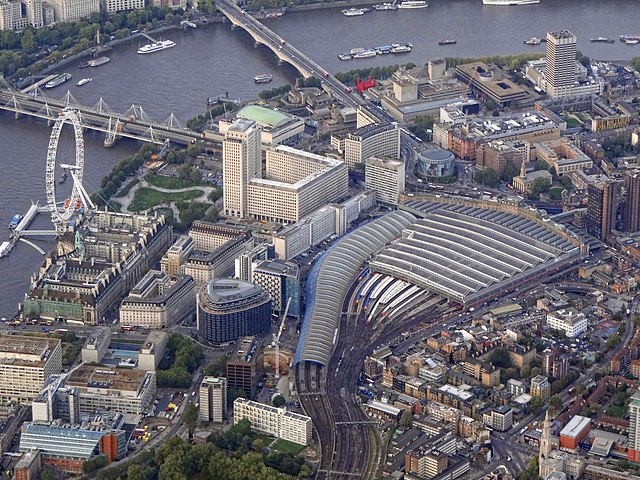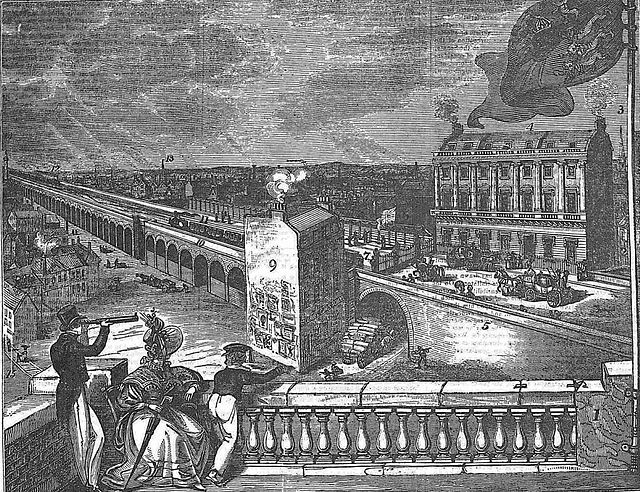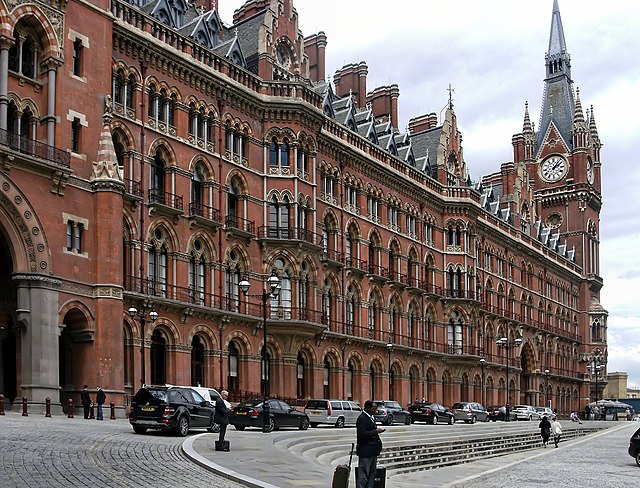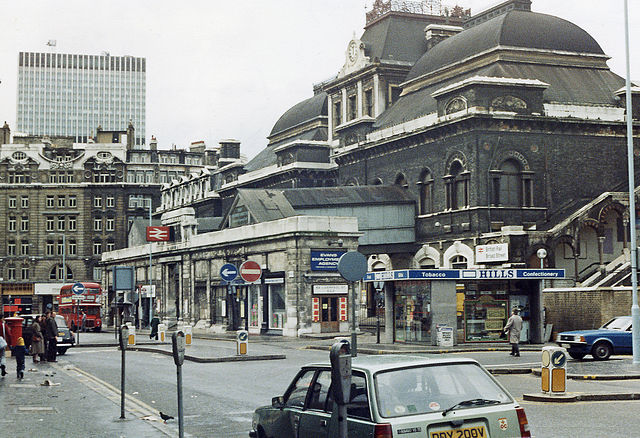Waterloo station, also known as London Waterloo, is a major central London terminus on the National Rail network in the United Kingdom, in the Waterloo area of the London Borough of Lambeth. It is connected to a London Underground station of the same name and is adjacent to Waterloo East station on the South Eastern Main Line. The station is the terminus of the South West Main Line to Weymouth via Southampton, the West of England main line to Exeter via Salisbury, the Portsmouth Direct line to Portsmouth Harbour which connects with ferry services to the Isle of Wight, and several commuter services around west and south-west London, Surrey, Hampshire and Berkshire.
Aerial view from the south, showing Waterloo station, Waterloo and Hungerford Bridges and the London Eye
The original Waterloo station in 1848
Plan of Waterloo station in 1888
The Victory Arch, the station's main entrance, was constructed by James Robb Scott and commemorates Britain's involvement in World War I.
The London station group is a group of 18 railway stations served by the National Rail network in central London. The group contains all 14 terminal stations in central London, either serving major national services or local commuter routes, and 4 other through-stations that are considered terminals for ticketing purposes. All current stations in the group fall within London fare zone 1. A ticket marked "London Terminals" allows travel to any station in the group via any permitted route, as determined by the National Routeing Guide.
The first London terminal station, London Bridge, in 1836
The distinctive Gothic architecture of St Pancras railway station survived demolition, unlike neighbouring Euston.
Broad Street station was one of the few in the London station group to be closed and demolished.
The building of railway lines into London took up a substantial amount of land, particularly south of the Thames.








